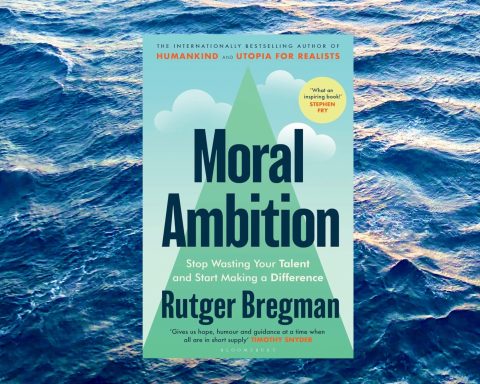 Sian Gordon is a recently retired GP with over 30 years’ experience. She continues to work as a GP appraiser.
Sian Gordon is a recently retired GP with over 30 years’ experience. She continues to work as a GP appraiser.
The preface to this book begins with a quote from the hugely influential French physician, Philippe Pinel (1745–1826):
‘It is an art of no little importance to administer medicines properly; but it is an art of much greater and more difficult acquisition to know when to suspend or altogether omit them.’
The Maudsley series of books on prescribing in psychiatry has been a cornerstone of psychiatric practice, and it is welcome to see their first publication focusing on deprescribing. Many would argue that, given the ever-burgeoning scale of prescribing of these medications, such a publication is long overdue, and it is to their credit that the authors have produced a book that is full of detailed practical advice and extensively referenced background information.
The authors, a psychiatrist in training and a psychopharmacologist, state in their preface that:
‘This is not a book that questions the validity or effectiveness of medicines used for mental health conditions. It is a guide to the deprescribing of psychotropic medication in situations where deprescribing is, on balance, agreed to be a better option than continued prescribing.’
“… the authors have produced a book that is full of detailed practical advice”
They also state that they ‘aimed to provide greater detail on how to implement the broad principles outlined’ in UK National Institute for Health and Care Excellence guidance.1 They are open about their own difficulties in coming off psychiatric drugs and acknowledge the role of patient groups in helping affected patients manage their own withdrawal when help from the medical profession has been hard to come by or even dismissive.
The authors emphasise that:
‘… physical dependence is a predictable physiological response to chronic use of psychotropic medication. This inevitably and predictably leads to a withdrawal syndrome on stopping or reducing the dose and does not indicate addiction, misuse or abuse.’
They go on to state that:
‘… those with addiction issues are beyond the scope of the current textbook. Such patients will need support for the behavioural aspects of addiction that are not relevant to people with physical dependence.’
This is a very important distinction that has not always been helped by shifts in clinical nomenclature, as discussed further in the book.
A general introduction to deprescribing is followed by individual chapters focusing on antidepressants, benzodiazepines/Z-drugs, and gabapentinoids. The authors acknowledge from the outset that this format means a lot of repetition, but this works both to make the book a useful reference work and to drive home the pharmacological and broader principles behind successful deprescribing.
“[The authors] are open about their own difficulties in coming off psychiatric drugs”
The importance of gradual hyperbolic reduction regimes, of which many GPs may still be unaware, is explained, as well as how these can be modified to take account of individual patient experience. Detailed tables, describing exactly how these reduction regimes can be achieved both in terms of dosage regime and available preparations, are provided.
There are some omissions in this book. Although there is recognition that withdrawal symptoms can be mistaken for new physical health conditions, there is no mention of menopause. I assume this reflects a lack of research in this area, but every GP will recognise this as a current hot topic in day-to-day practice. The book is careful to advise against the use of further medications to treat withdrawal symptoms but does not mention the risks of unfettered use of oestrogen.2 Also, there is little specific advice on deprescribing in pregnancy.
It is clear that the detailed, patient-centred approach outlined in this book is time-consuming, and it is possible that many GPs will find such an approach daunting for this reason. However, there is no doubt that this book provides a reference that can be used in general practice, especially when other healthcare professionals such as pharmacists and nurse practitioners are involved in prescribing.
“… more effort needs to be made to reduce the prescribing of these drugs in the first place”
In particular, the authors describe the ‘psychological moat’ of using unlicensed preparations to provide the small doses required for hyperbolic tapering, and this book provides the detail and authority required for primary care practitioners to cross this moat.
There is an underlying message that I could not help but be aware of while reading this book: namely that much more effort needs to be made to reduce the prescribing of these drugs in the first place.
I also cannot help but reflect on the medical profession’s reluctance to accept what their patients were telling them about drug effects, preferring to listen to false reassurance often originating from the producers of the drugs involved.
This book is taking an important step in addressing the legacy of these mistakes, and I hope it will also prompt the profession to reflect on the wider lessons to be learnt.
Featured book: David M Taylor and Mark Horowitz, The Maudsley Deprescribing Guidelines: Antidepressants, Benzodiazepines, Gabapentinoids and Z-drugs, Wiley-Blackwell, 2024, PB, 592pp, £44.55, 978-1119822981
References
1. National Institute for Health and Care Excellence (NICE). Medicines associated with dependence or withdrawal symptoms: safe prescribing and withdrawal management for adults. NG215. London: NICE, 2022. https://www.nice.org.uk/guidance/ng215 (accessed 22 May 2024).
2. British Menopause Society. BMS statement — HRT prescribing. 2022. https://thebms.org.uk/2022/12/bms-statement-hrt-prescribing (accessed 22 May 2024).
Featured photo by Teslariu Mihai on Unsplash.







Just one clarification: the ‘psychological moat’ is not to prescribing unlicensed medication but to prescribing liquid versions of medication (which are licensed preparations often made by the manufacturer). A liquid allows the gradual taper that allows more patients to safely stop.
There is also a ‘bureaucratic moat’ in that these are more expensive preparations but there is growing recognition that the short-term cost is likely to be beneficial in the long-term by allowing people to safely stop, so reducing medication costs, the burden of adverse effects and the costs of the terrible state people can end up in if they come off these medications too quickly.
Thank you very much for clarifying that Mark, apologies for misunderstanding that part of your preface.
[…] wife recently had this review of the above guidelines published in the British Journal of General […]